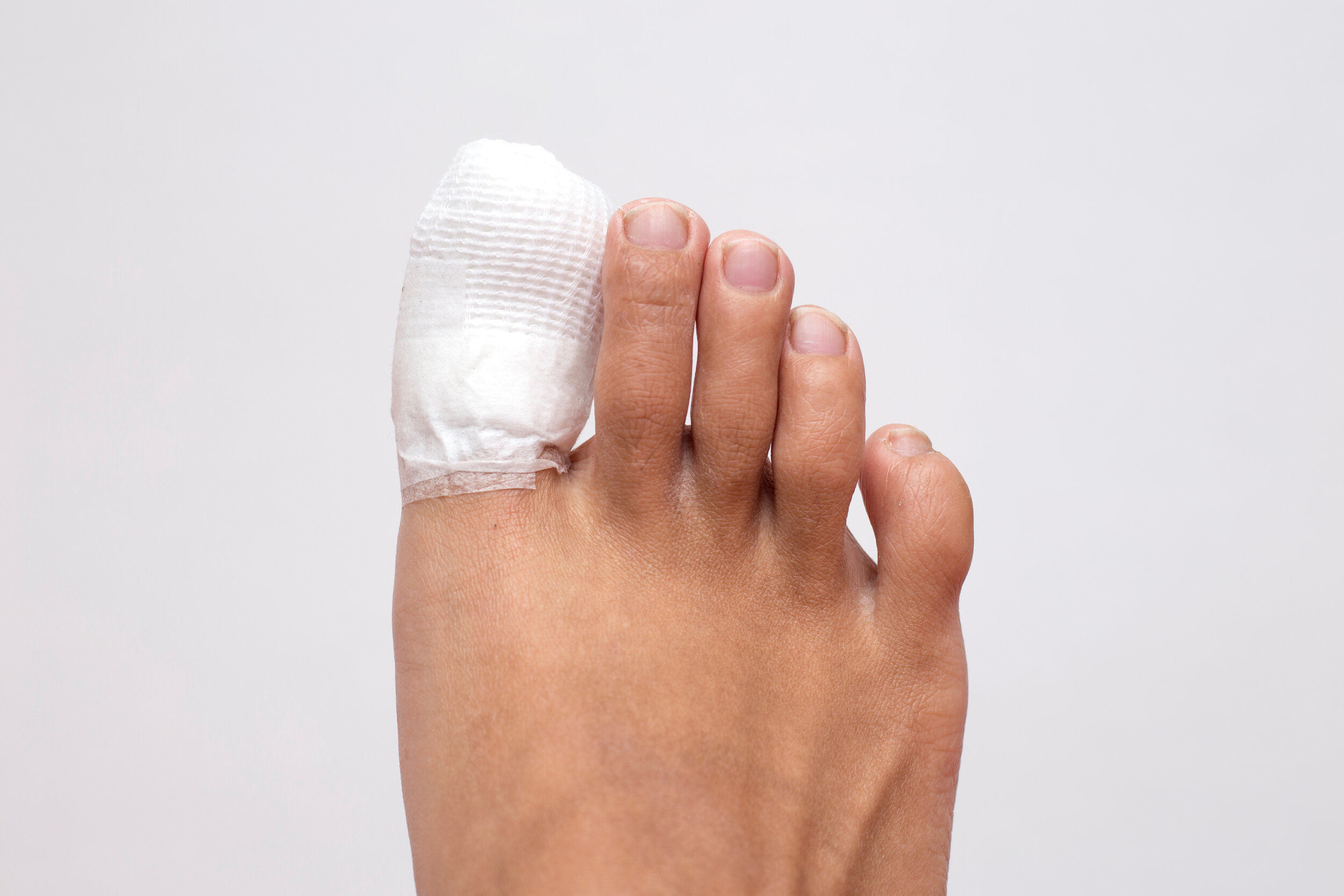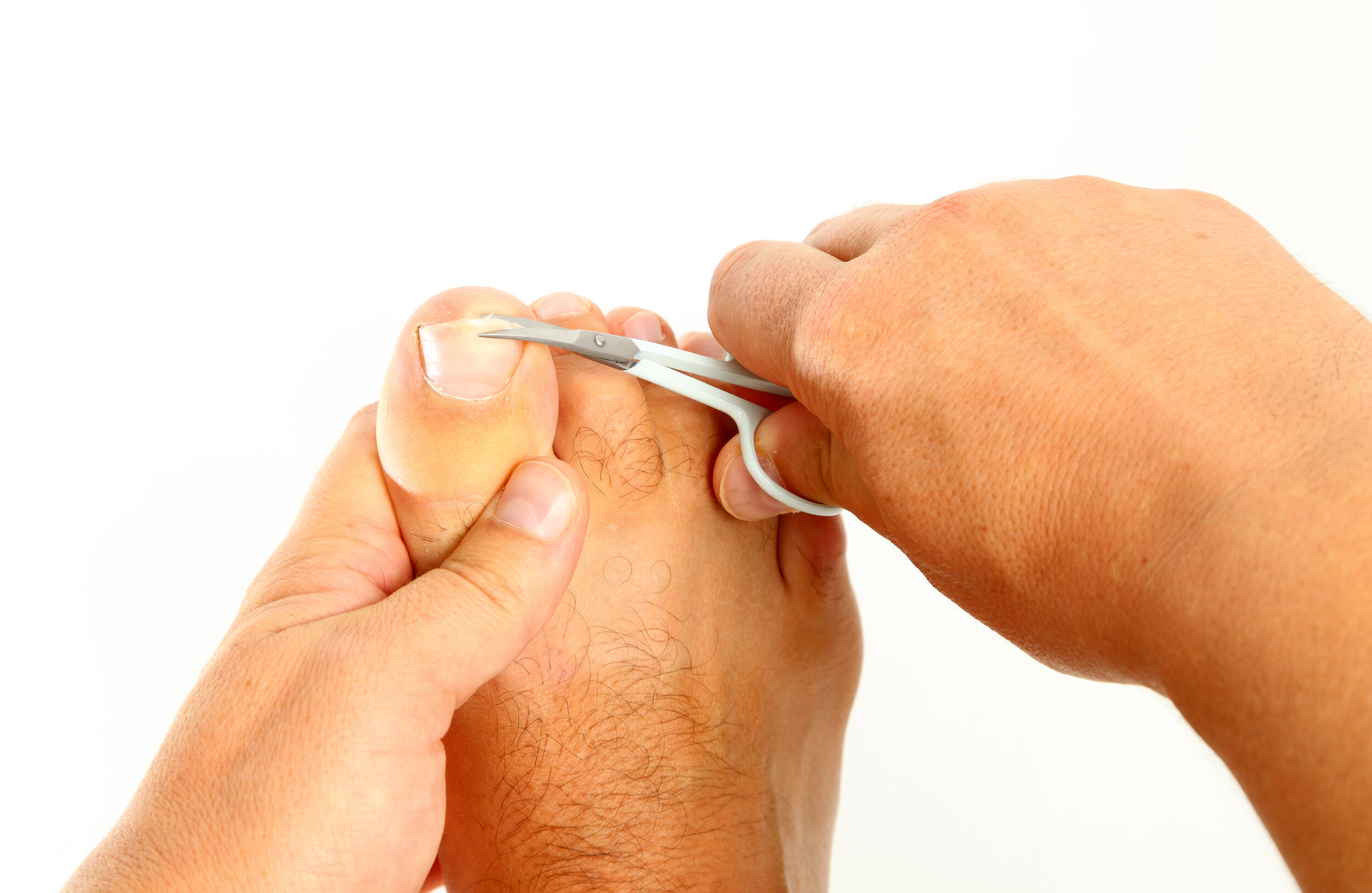
Do you have a recurring ingrown toenail and don’t know what to do?
The Feet Team regularly performs conservative and surgical treatment for ingrown toenails. An ‘Ingrown toenail’ is a nail which has pierced the flesh in the corner or side of the nail, resulting in pain, inflammation and sometimes infection.
Conservative treatment is alway recommended at the beginning, however for stubborn, reoccurring nails, surgical intervention is required.
If this is your first ingrown toenail and it isn’t a problematic nail yet, visit the Ingrown toenail treatment page for advice on conservative treatments and organise a general appointment for review.
Why did I get an ingrown?
It is often hard to identify the exact reason why an ingrown occurs, however the most likely cause are:
Poor cutting technique.
Picking your toenails.
Wearing shoes with a narrow toe box.
Wearing steel cap boots at work.
Trauma to the nail, through stubbing it or dropping a heavy object on it.
Genes, simply having too large of a nail for the space or having highly curved nails (pincer nails).
Visiting a Nail Salon.
Different Surgical Treatments
The Feet Team are experts in managing and treating ingrown nails using a surgical technique which is minimally invasive. There are an array of different surgical treatments available in order to permanently resolve your ingrown toenail.
Partial Nail Avulsion with phenolisation (PNA) is the most common procedure. This is when the problematic side or sides of the toenail are removed while preserving the natural look of the nail. This is a safe, efficient and reliable way to treat ingrown toenails with success rates of 98.5%.
In rare cases a Total Nail Avulsion (TNA) is required whereby the entire nail is removed. This is only recommended for excessively deformed nails and all other options aren't viable.
What is involved?
Initially we have to create a sterile environment to reduce any chance of infection.
Two sites of local anaesthetic are delivered to ensure the toe is completely numb. If you have any issues with needles don't worry we have a topical numbing cream we can apply before administering.
After the toe is numb, a tourniquet is applied to reduce blood flow to the area. This will assist with visibility for the practitioner and the efficacy of the phenol.
The nail edge is raised from the nail bed and cut at the desired margins to ensure a cosmetic nail afterwards.
The problematic nail edge is removed and any extra debris or fragments are removed.
A weak acid, phenol is applied to destroy the nail matrix with three 20 second applications.
The surgical site is flushed with a sterile saline in preparation for dressing.
The tourniquet is removed and carefully bandaged.
Take home instructions are given and a redressing appointment is organised.
Preparation for your surgery
Have you had your initial consultation before booking your surgery? You MUST have your feet assessed and discuss with the podiatrist which options are available.
So you are booked in and ready to get back to a pain-free foot. Things to consider before your appointment.
Organising a lift home from the clinic, as you won't be able to drive with the foot which has been treated.
Bring appropriate footwear to wear home, you will have a large bandage on your toe or toes. Open toe sandals/ thongs recommended.
Make sure you have had either breakfast or lunch before your procedure as it helps your body metabolise the local anaesthetic.
Organise to work from home if permitted or taking 48 hours off work. The Friday afternoon is often an ideal appointment.
Complete the pre surgery consent form.
Post Operation
You will be able to walk immediately after the appointment.
It is recommended you head home straight away to elevate your foot for the first 4-6 hours.
We use minimally invasive techniques, however in some cases minor pain can be present following the procedure. It is recommended to take panadol as advised on the packaging.
You must keep the toe dry until your follow up appointment.
Follow-up appointments will be organised 3-4 days after the procedure for re-dressing.
Final check up 3 months later.


